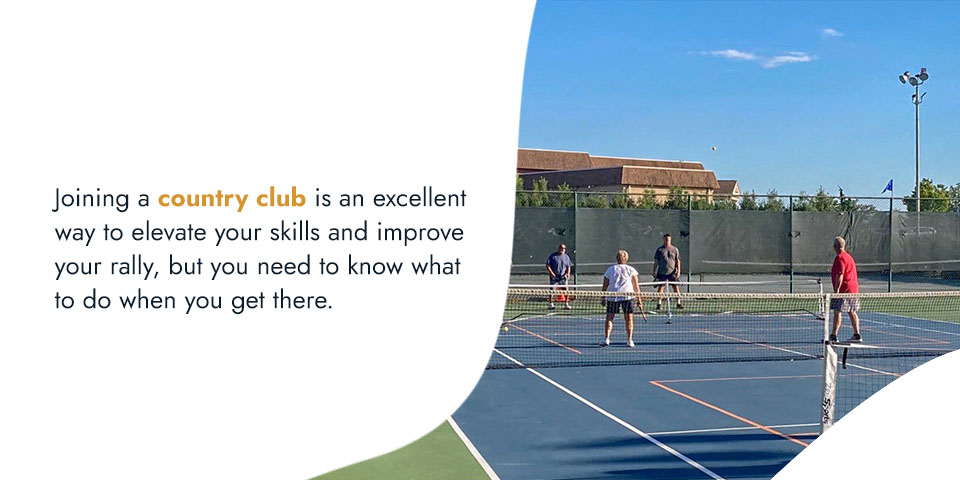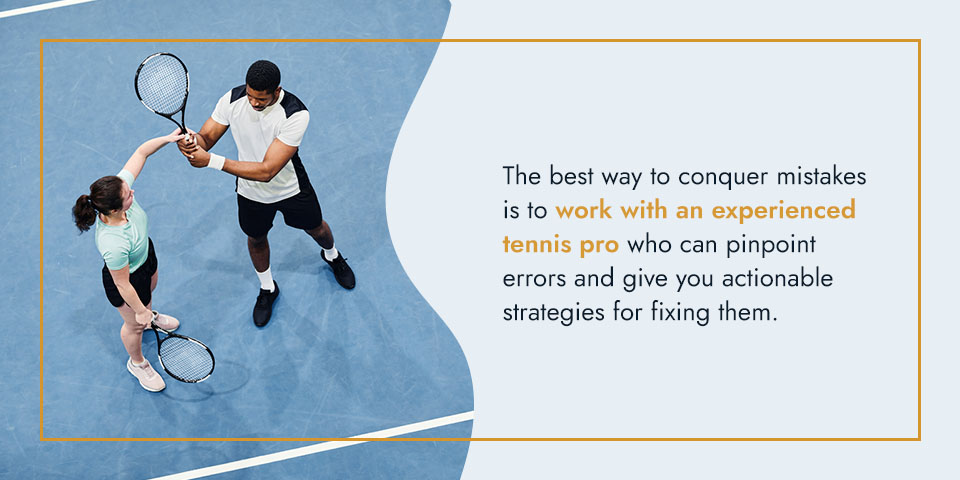
Tennis is one of the most popular sports in the country, with 23.84 million participants. It’s a sport that people of any age and skill level can enjoy. Even if you’re a beginner, it’s an opportunity to socialize and learn something new. As a new player, you can only say you’ve mastered tennis fundamentals when you can participate in a rally.
A rally is a group of continuous shots between players within a single point. Whether you’re a casual or competitive player, rallies are the core of the game. Many players focus on mastering the art of rallying to enjoy the game and provide the same enjoyment to their opponents. The following tennis tips for beginners can help you improve your rallying, understand the game and set new goals with your tennis pro.
Rallying makes the game of tennis exciting. You can feel the tension building when you get it right as players push themselves to score that elusive point. Before you can play with the best of them, you need to master the different elements of tennis that make up a rally.
Tennis biomechanics begin at your feet. It’s the beginning of a series of movements called a kinetic chain. From your feet, the kinetic chain extends through your legs, hips, chest, shoulders, arm and wrist. This movement is the buildup, storage and release of energy that allows you to hit the ball. Biomechanically correct tennis prevents common tennis injuries and lets you play the game however you want.
Tennis consists of six basic strokes, which allow you to rally competitively. Some basic tennis stroke mechanics include:
Like any other sport, tennis excellence comes from practice. Tennis basics for beginners include mastering your tennis stroke consistency and rally skills. The more time you spend on the court, the better your game. Joining a country club is an excellent way to elevate your skills and improve your rally, but you need to know what to do when you get there. The following tips can help you boost your game and aim for longer, more successful rallies:

A contact point in tennis is where the ball is in relation to your body and your racket when you hit it. You want to find the ideal spot as you strike to get the boost out of your kinetic chain. The ball should be in the following places when you strike:
While it can be tempting to hit the ball as hard as possible, hitting it too hard or fast for your skill level can stop a rally in its tracks. Of course, if you aim for a winning shot, you want the power behind it, but not every shot needs to be a winner. Instead, focus on easy, comfortable rallying until you have your basic skills in place.
In tennis, you want to give yourself as much time with the ball as possible, which means preparing for your shorts early. You must work several things out quickly when your opponent hits the ball. You need to know where to position yourself to return the shot as effectively as possible. The first thing you see when the ball leaves your opponent’s racket is whether it’s coming to your forehand or backhand side so that you can get your racket back early.
Try to gauge the ball’s depth, speed, spin and height so you can position yourself and get your racket back in time to hit the ball with maximum power and accuracy.
This tip may sound obvious, but as a rally wears on, players often lose focus. The moment you become disengaged, the chances are that your opponent has the point, and the rally is over. Stay engaged in each point, focusing on where the ball is and ready to move when needed. Breathe at the baseline to keep a robust and healthy energy flow. Commit to each shot until the rally ends.
After every shot, you must move to a central location to recover and prepare for the next one. Being too far forward is a common tennis mistake. It allows your opponent to hit the ball up around your head — a challenging shot to return. Instead, the proper baseline position in tennis is a few feet behind the baseline. When you stand back, you have more time to prepare for your next shot, read the ball accurately, get into the best position to hit it back and keep the rally going.
You’ll step forward to meet the ball when you recover behind the baseline. If you’ve ever run backward to meet the ball, you know how important that is. You can conserve the energy needed to run backward and position your body behind the ball for maximum power. If you’re in front of the baseline, your contact point will often be too high. Instead, allow the ball to reach its peak and begin to come down before you hit it. Hitting a falling ball gives you more time to prepare before you send it back.
Another fundamental ingredient to a good rally is to improve your tennis strokes. Your swing is the pendulum movement in a forehand or backhand that gives the ball power and moves it up over the net. The following tips can help you develop a natural tennis swing that keeps a rally going:
Tennis beginners and even intermediate players are prone to errors. It’s the nature of the game. The sooner you come to grips with these errors, the more fluid and controlled your rally. Some common beginner tennis mistakes and strategies to fix them include:
The best way to conquer mistakes is to work with an experienced tennis pro who can pinpoint errors and give you actionable strategies for fixing them.

So much of tennis is about timing and rhythm. You want to take time away from your opponent while giving yourself as much time as possible to approach the ball and deliver your shot. To achieve these goals, your reaction time must be excellent. Even beginners can sharpen their reflexes during training. Some tips and tricks to improve your reaction time include:

Improving your rally takes time and patience, but the following drills can help you achieve controlled tennis rallies:
Once you’ve mastered these simple drills, the tennis pro at your courts can make them progressively more challenging. Over time, you’ll feel comfortable enough to rally with the best of them!
If you want to improve your tennis game, Colonial Country Club in Harrisburg, Pennsylvania, is the perfect location to level up. When you become a member, you have free access to our tennis, golf and swimming facilities, including four tennis courts, lighting for evening matches and a sophisticated patio bar for refreshments after the game.
Let former grand slam competitor Maja Palaversic help you improve your rally. With over 20 years of experience and a passion for introducing beginners to the game, she is an ideal option for anyone looking to elevate their game in a peaceful, pleasant environment. Become a member and rally on Harrisburg’s finest tennis courts today.